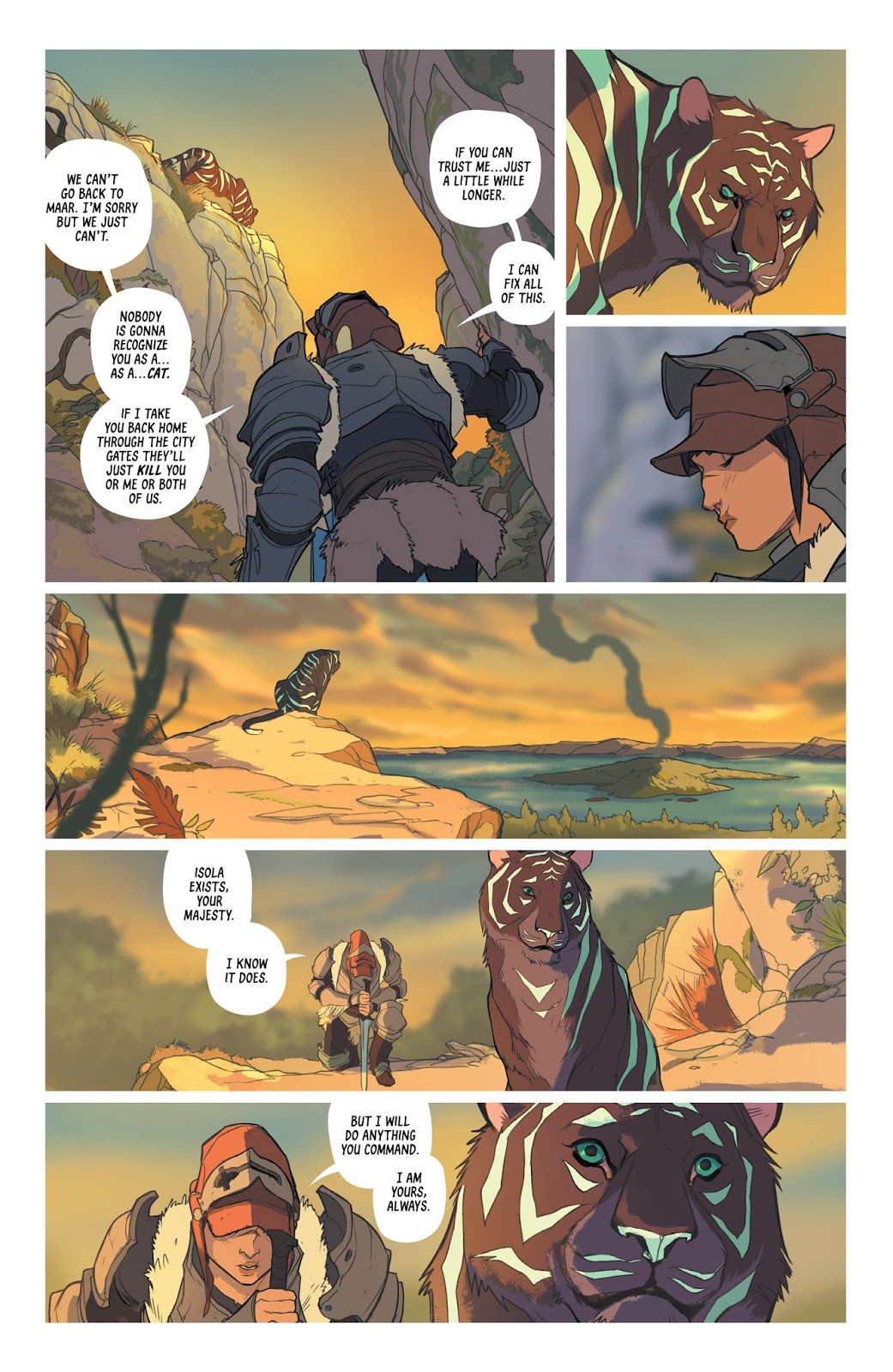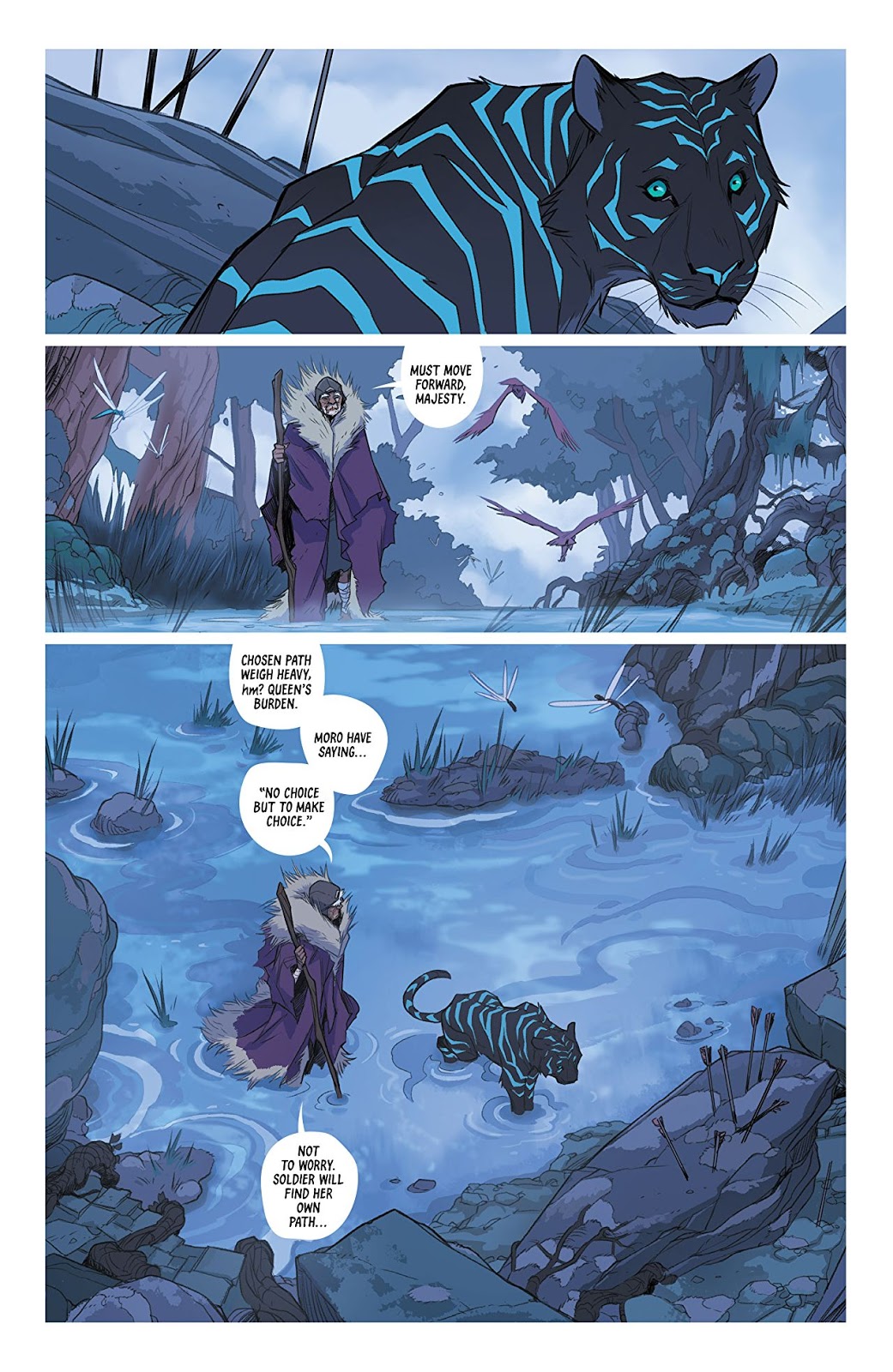Story: Brenden Fletcher, Karl Kerschl
Artists: Karl Kerschl, Msassyk
Image Comics, April 2018 – present
FIFTEEN NINE ONE FOUR is how I first muddled through the ISOLA title, now collected in an attractive paperback volume with the first five issues, plus a separate prologue that reveals the story behind the opening shown here with a girl soldier guarding a tiger in the wilderness. Thank goodness for publishing standards to keep order, so I could at last read the names of the artists Karl Kerschl and Msassyk in plain print on the inside title page. The whole adventure hinges on miscomprehension, confusion, and instant encounters with enemies not your kind and not kind. Muddling the title in an incomprehensible hieroglyph is precisely the point.

A broad periphery of the other surrounds the scenery like a black presence we know is there but have no time or presence of mind to observe and read the signs, the symbols the metaphors the allusions to grasp what you know and we know between us, while a palpable surrounding blackness watches. My word is not your word, until one of us learns the language or can recognize the signals of the heart; then two or three gathered together may share the light as in holy texts, become white in the light and hold off bleak confusion and terror in a moment of cooperation, congregation, a bond of trust that shields us as a unit from evil puncturing the peripheries. Such evanescent comfort.

The story here by Brenden Fletcher and Karl Kerschl is immaterial, obviously merely a prop for the artists to soak themselves in the kind of scenery and figures where they want to live, intensely beautiful, each panel on its own happy to arrive in existence in so exalted a state. Unsurmountable. This is one of those times you can fill in whatever textboxes you want, it doesn’t matter. The era uses spears as one of the best weapons, and unlimited magic.

The basic theme involves the way languages interweave with gestures to communicate, offering a glimpse of what life was like in earlier centuries when languages were not broadcast, but nested in semi-isolated locales as in Scottish glens with a few dozen folk coming to market down a narrow bridlepath off the crags a few times a month to banter with others askew on their own lonely crags. What mind had you to talk then, laddie? How did you find your usage? Your way in the wide world that was too wide even over the next hill? Them folks talk funny, and look funny too.

Ancient Persian prophet Zoroaster framed the cosmos in a dualism we have yet to shake, divided into those who follow Ahura Mazda, and aim to defeat the Lie and support the light of Truth, versus the other, those who follow the Lie, determined by a deity who has no one distinct name, so always remains shadowy, making no clear target. The one the other, the me, the you, the white the black. The tension in this story cast in images as leaves on a rippling pond, leaves it unclear all the way through which side wins.

